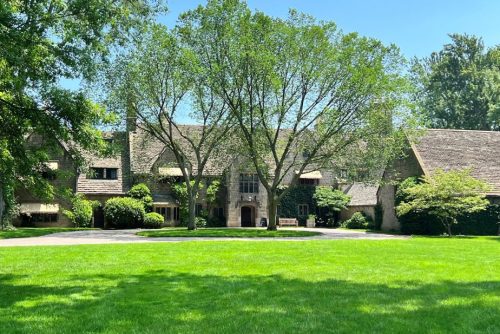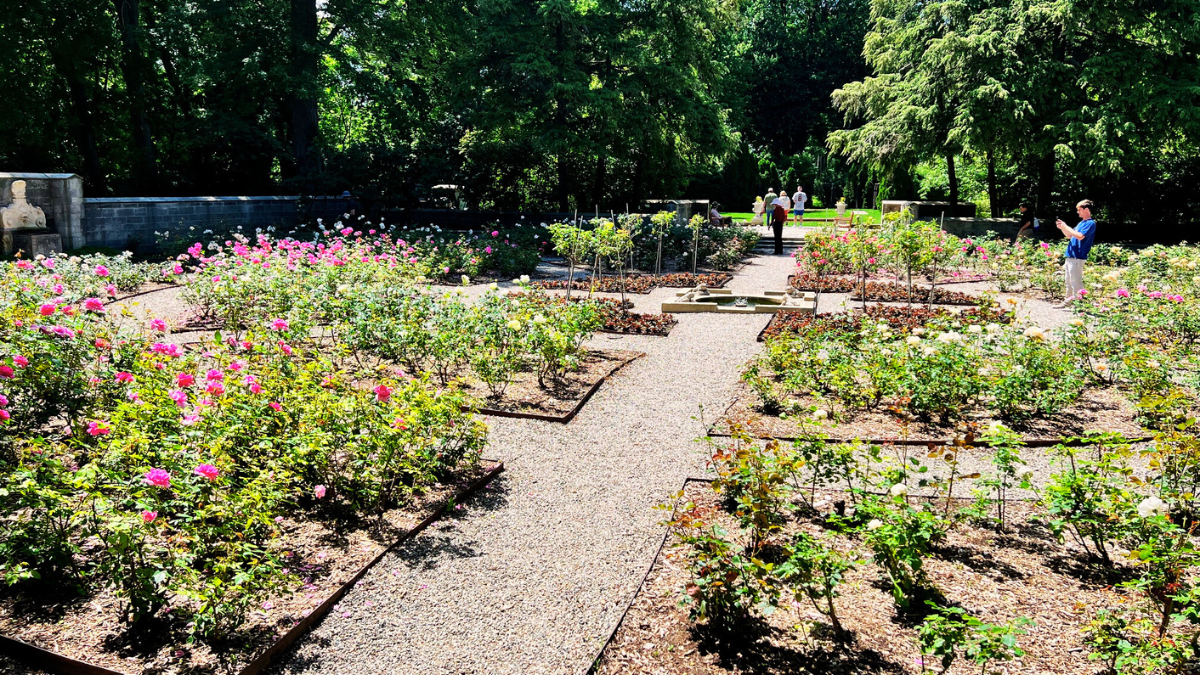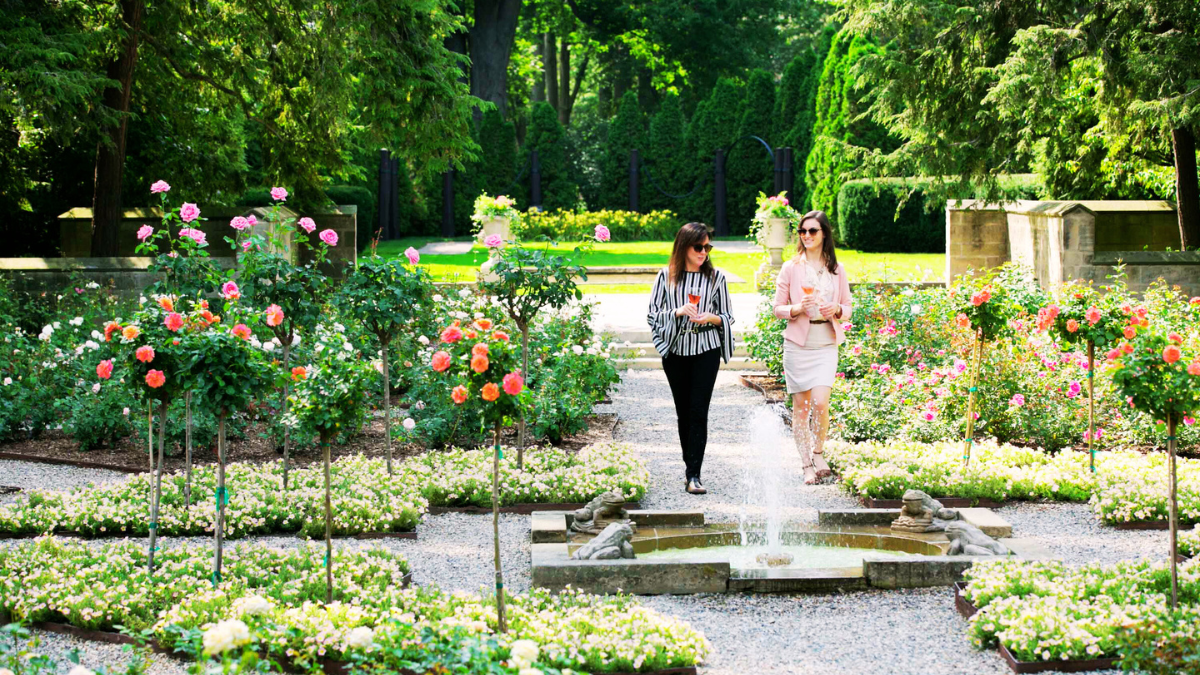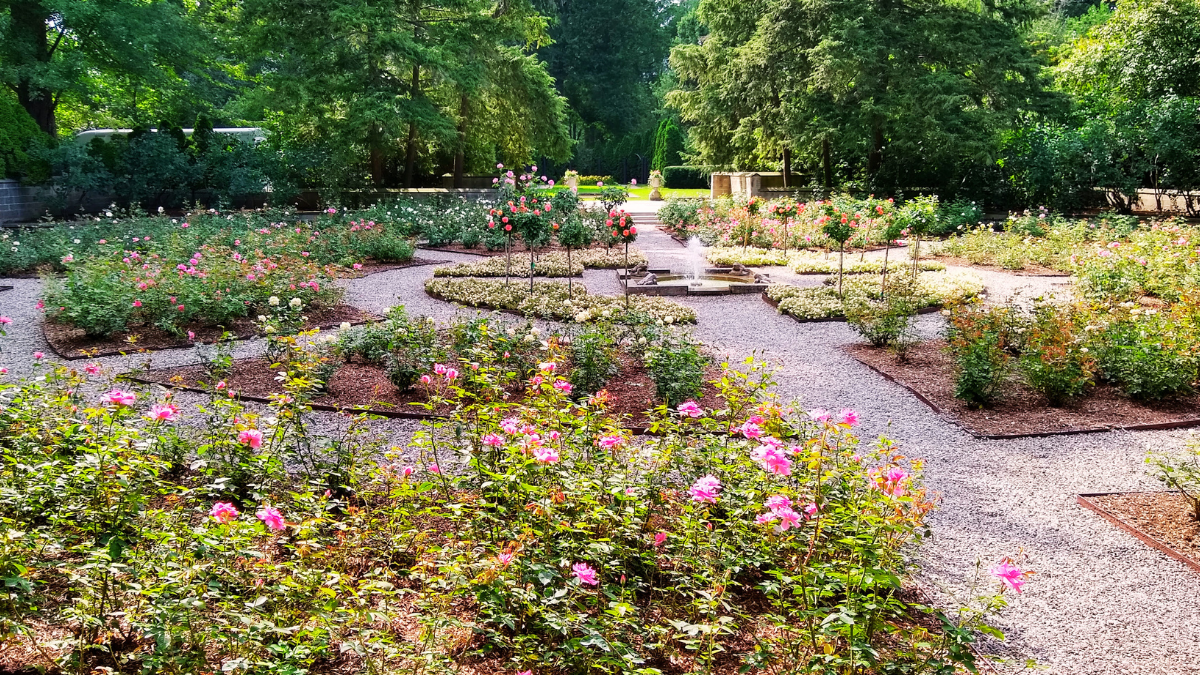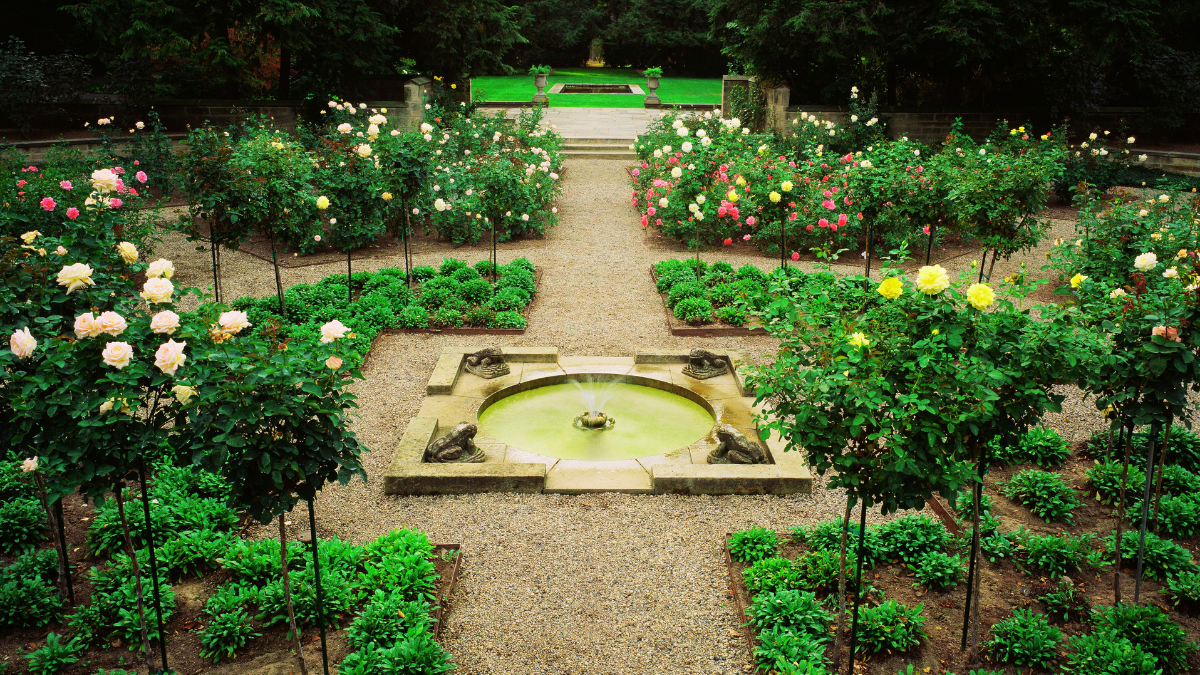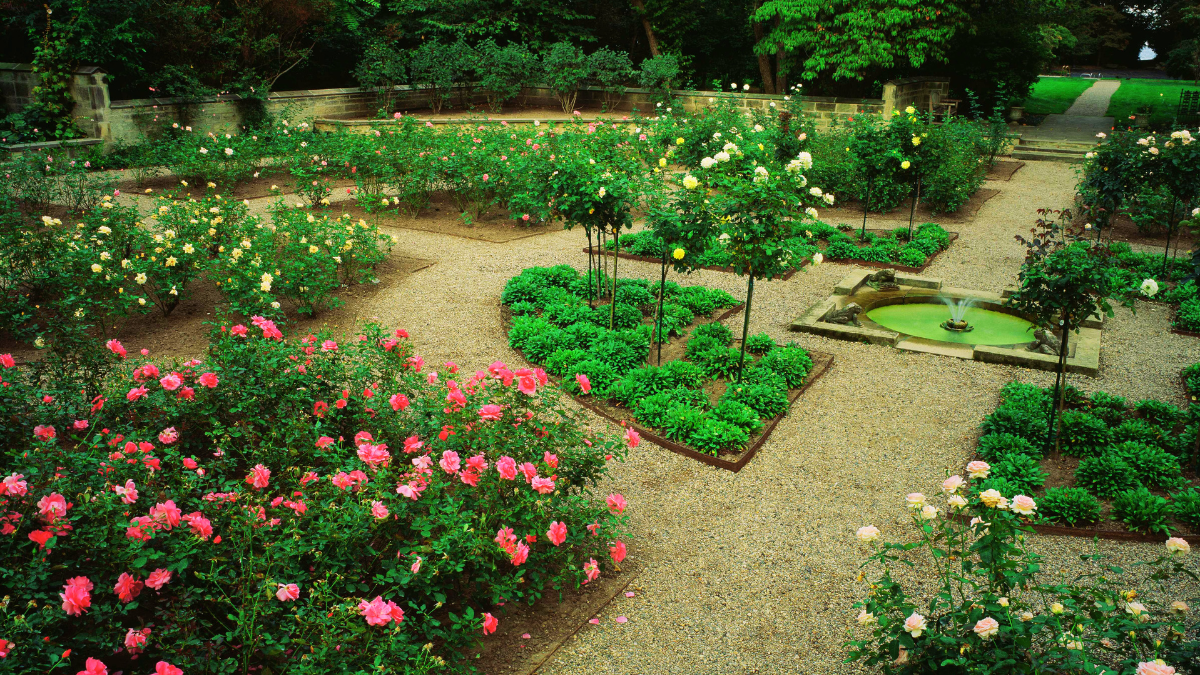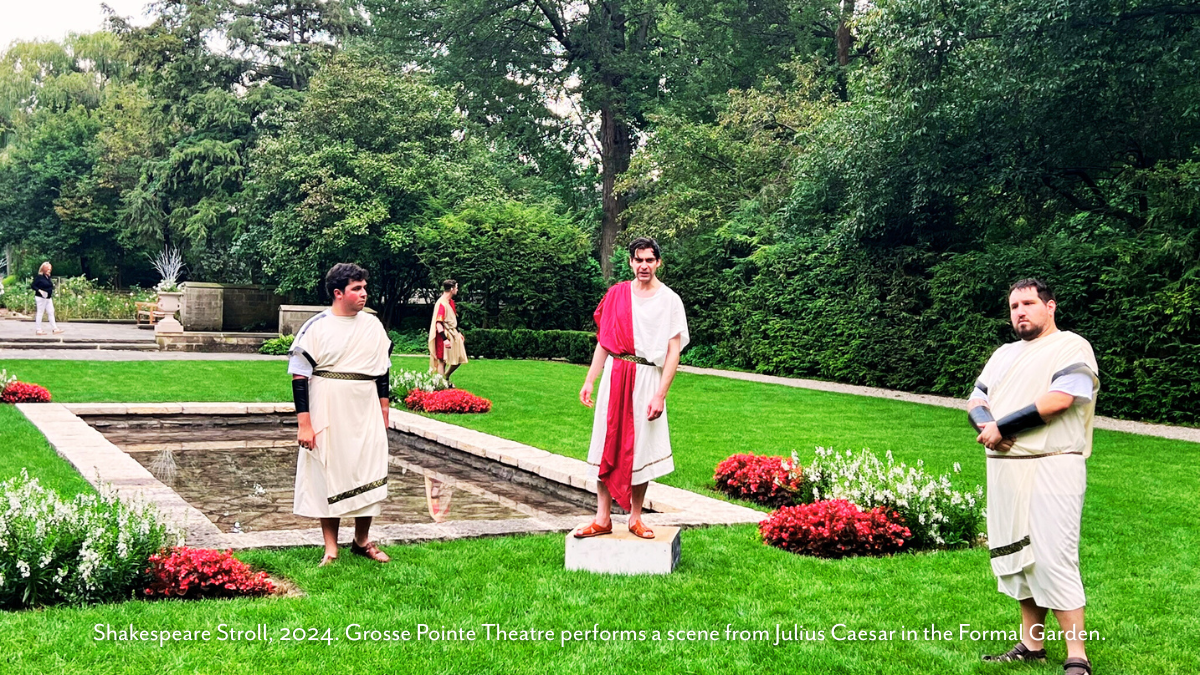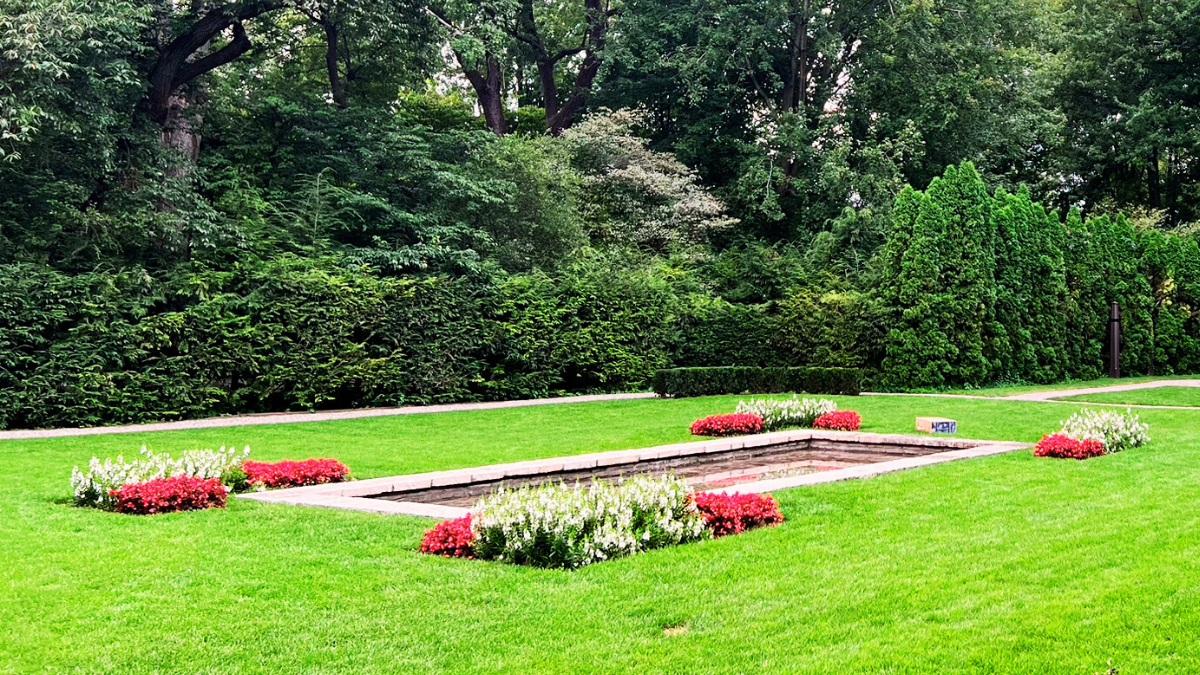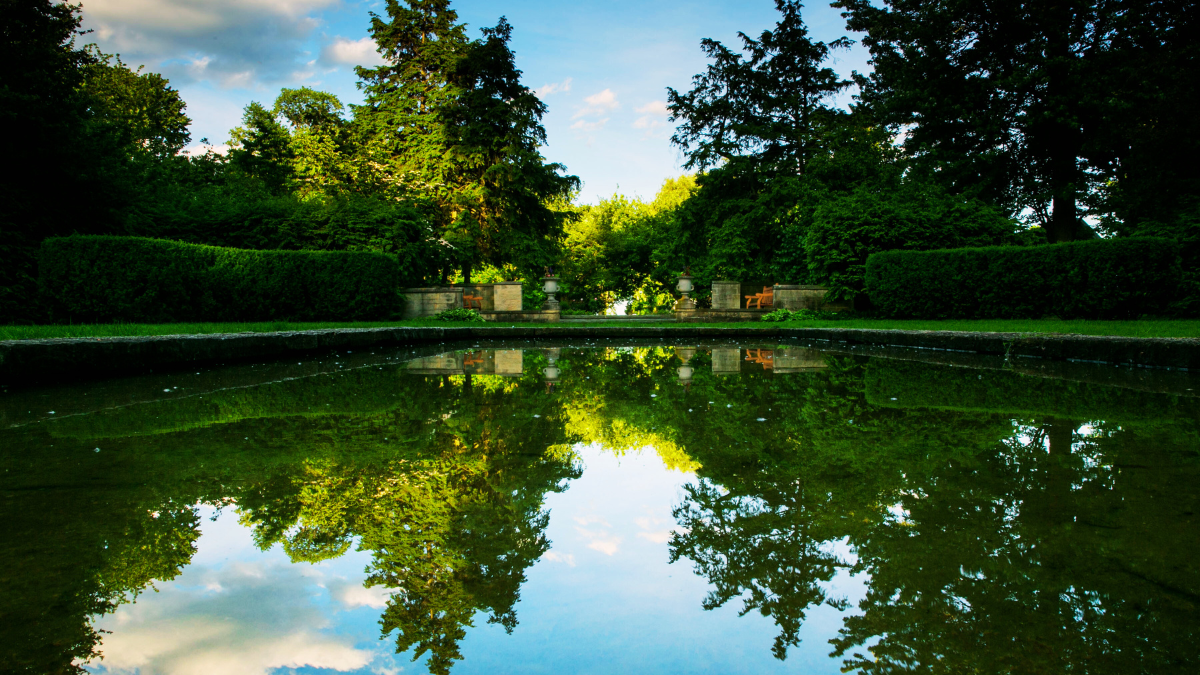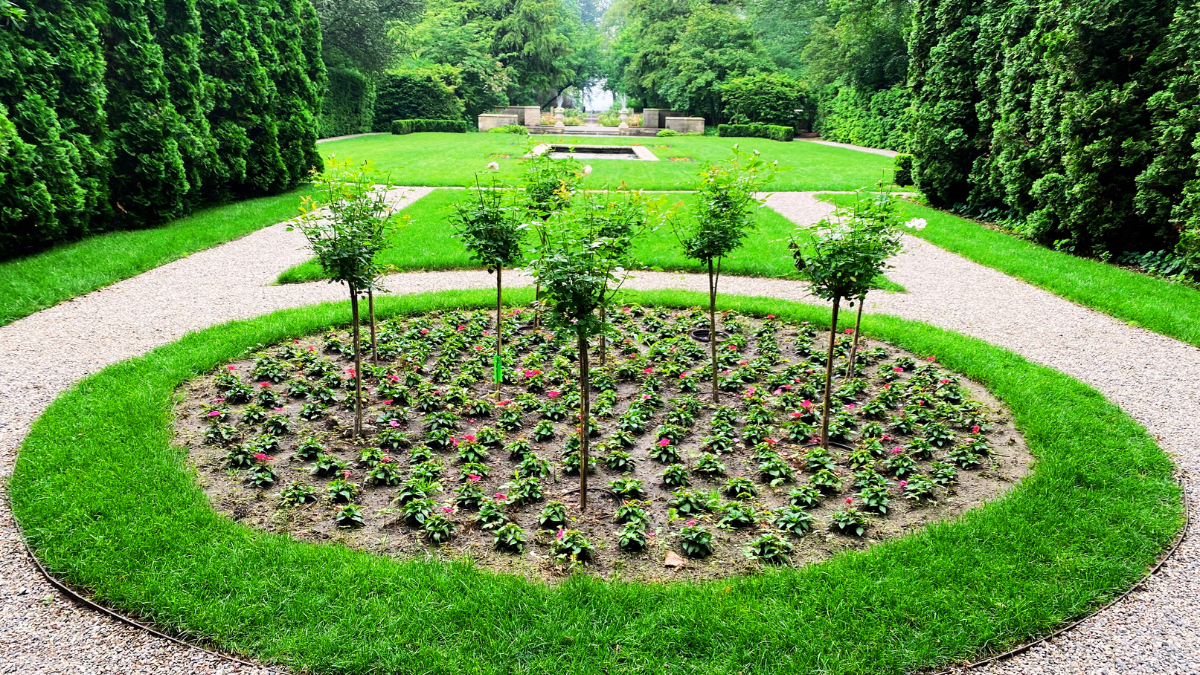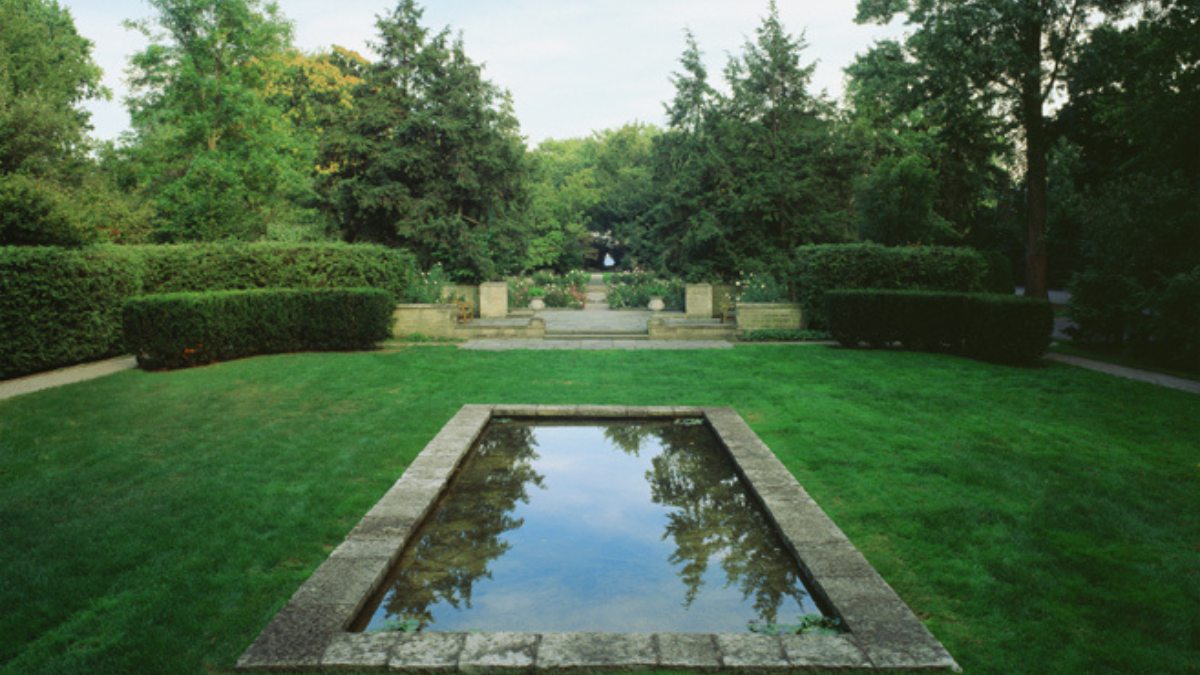Today at Ford House
Hours and Locations
Tour Information
More About Visiting Ford House
Don't Miss This
Gardens & Grounds
A living legacy of beauty, vision, and preservation.
Wander through the breathtaking gardens and grounds at Ford House and step into the living legacy of Eleanor and Edsel Ford. Designed with elegance, intention, and a deep appreciation for nature, the estate’s 87 acres invite you to explore formal gardens, wooded lakeshores, fountains, and architectural features that blend seamlessly into the landscape.
A Living Landscape, Preserved with Care
The beauty of Ford House’s outdoor spaces is no accident. It results from deep collaboration between our expert Landscape and Historic Preservation teams. While our Landscape crew nurtures the seasonal blooms, ornamental trees, and natural areas, our Historic Preservation department safeguards the built elements that frame this environment—fountains, masonry walls, trellises, and historic pathways.
These efforts reflect our core values: honoring the past while ensuring its integrity for the future.
![]()
The Rose Garden
A Wheel of Blooms
Nestled near Flower Lane, the Rose Garden was one of Eleanor Ford’s favorite places on the estate. At her request, it was originally accessible only through a single formal entrance from the north, encouraging visitors to approach it with intention and reverence. By 1929, new access points were introduced—from the tennis courts and later the Recreation Building—providing more informal ways to enjoy this peaceful space. Today, it is a romantic, fragrant destination, showcasing seasonal blooms and traditional rose varieties in a beautifully symmetrical design that speaks to Eleanor’s refined aesthetic.
The Formal Garden
From Playground to Peaceful Retreat
What was once the estate’s playground was thoughtfully transformed into the Formal Garden, a refined space that echoes the grandeur of early 20th-century garden design. Carefully laid paths and symmetrical planting beds guide visitors through a visually striking space. This garden also serves as a connector, opening directly to the Rose Garden via a western entrance and offering views of the Pool and Lagoon. The garden’s geometric elegance, softened by seasonal color and lush greenery, makes it a favorite for quiet contemplation and photography.
![]()
Pathways Through Time
Throughout the estate, original Scioto sandstone pavers—sourced from Ohio—still guide your walk, many with buff coloring that distinguishes them from later bluestone replacements. When the estate opened to the public, the original grass joints between stones were converted to hard mortar for ease of maintenance. Today, Ford House is actively working to return some pathways to their authentic look. A small section near the pool and pergola has already been restored with grass joints as a pilot project.
These efforts follow detailed shop drawings and original construction logs, some of which were signed off by Edsel Ford and architect Albert Kahn. This reflects the meticulous design and personal involvement behind the estate’s creation.
The Fountains: Art, Engineering, and Legacy
Ford House is home to three distinct historic water features: the Lotus Fountain, the Reflecting Pool, and the St. George Wall Fountain. Preserving and maintaining these features is a careful, hands-on process that takes two preservation technicians approximately 4–5 hours per cleaning session. Each fountain requires its own tools, techniques, and specialized materials.
-
Lotus Fountain: In 2023, preservation experts conducted a microscopic paint analysis of the basin, uncovering a layered story. The earliest paint coats were gray, likely to simulate stone, followed by a striking aqua blue, and finally titanium white, which became the dominant color in recent years. The white finish remains today, preserving that rich visual history.
-
Reflecting Pool: Crafted from Lannon stone, a type of limestone from Wisconsin, this pool shares its material with the estate’s now-lost drying yard, which was replaced by an asphalt parking lot. One day, Ford House hopes to restore that historic feature to its original form.
-
St. George Wall Fountain: This 18th-century carved stone fountain was purchased in 1930 from French & Company in New York for $1,620. Its lead basin, dated 1776, came from an old estate in Sussex, England. Today, it’s protected by a custom copper liner and splash guard to reduce water damage to the limestone.
What Lies Beneath: Expert Masonry Restoration
Much of the estate’s hardscaping—walls, paths, steps, and terraces—requires expert preservation to survive Michigan’s freeze-thaw cycles and decades of wear. Our team uses:
-
A custom mortar formula for strength, breathability, and historic color-matching
-
Traditional tools like hand chisels and churn brushes
-
Slow curing techniques under damp burlap for 3 days to ensure durability
All masons working on the property receive specialized training to maintain the integrity of this historic craftsmanship.
Secret Stories in the Garden
As you walk, look for the garden’s hidden stories:
-
The trellises, walls, and stone elements are maintained year-round using a blend of traditional techniques and modern conservation science.
-
Near the pergola, a restored section of grass-jointed pavers shows how many of the estate’s walkways initially looked.
-
Underneath today’s walkways lie decades of thoughtful design choices, down to every stone’s precise dimension and spacing.
A Place to Reflect, Reconnect, and Discover
Whether you’re strolling the lakeshore, admiring the seasonal plantings, or enjoying a quiet moment on a historic bench, the grounds of Ford House offer a profound connection to the past and a moment of peace in the present. They remind us that preservation is not about freezing time but about allowing history to live, breathe, and inspire.
Estate Map
Special Thanks
Ford House is grateful for the generous support of Ford Motor Company Fund and helping us fulfill our educational mission and making Ford House more accessible to our community.

About Ford House
Ford House is a 501c3 nonprofit and National Historic Landmark. Experience the historic family home of Edsel Ford, the only son of Henry Ford, and his wife, Eleanor. Visitors from all over the world come to wander, wonder, and explore the beauty of this 1928 National Historic Landmark and uncover a unique piece of the American automotive story in metro Detroit. Learn more below.



